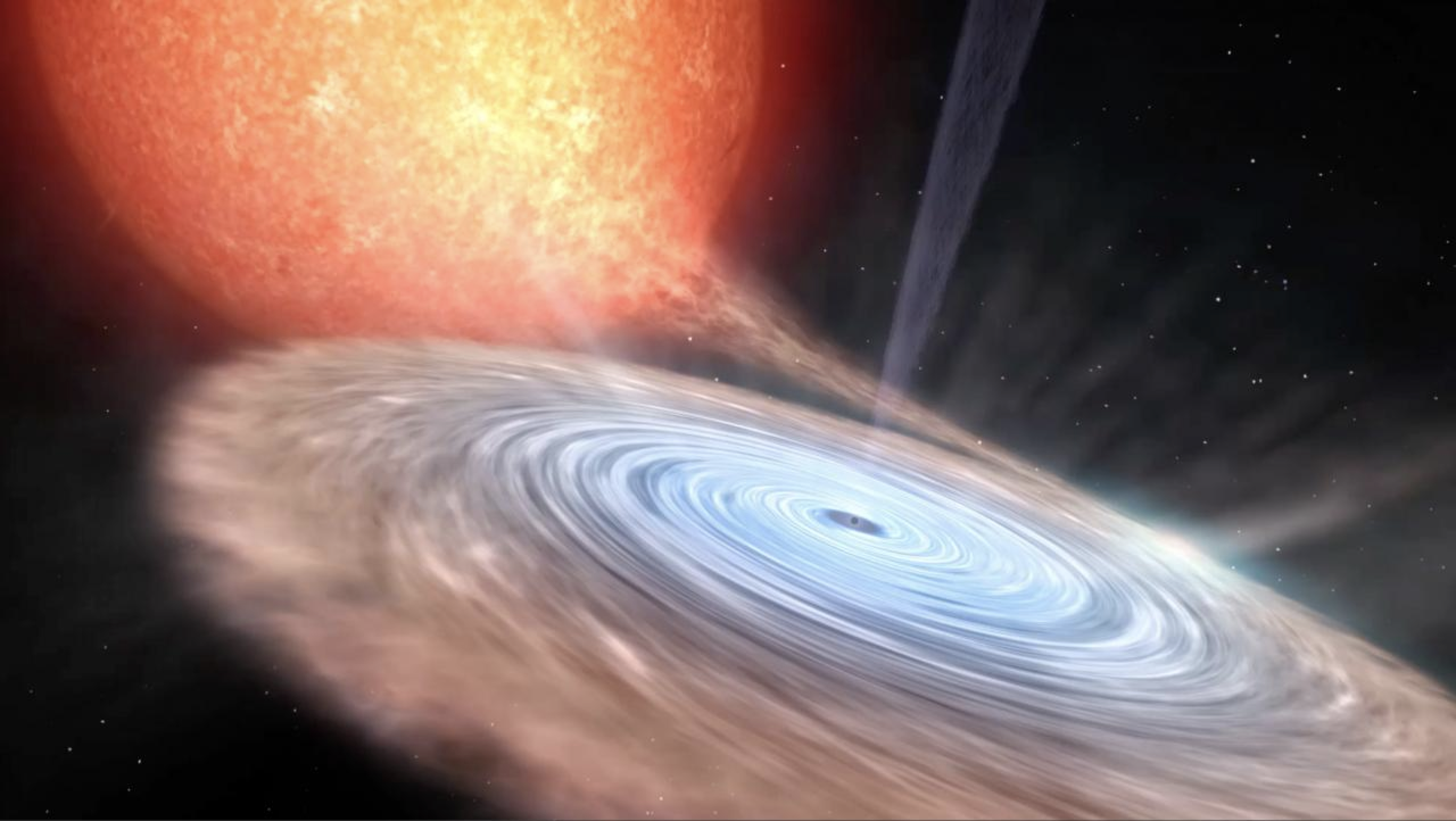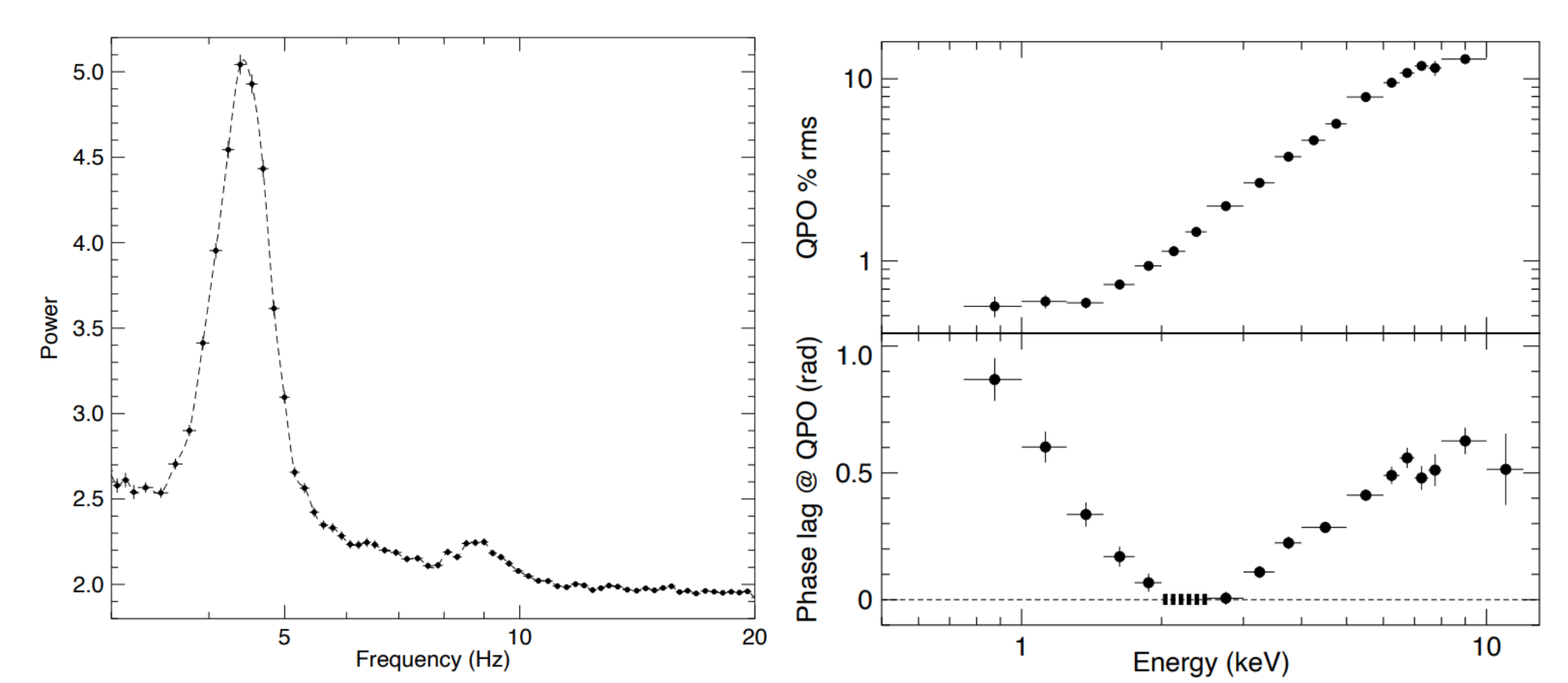NICER / ISS Science Nugget
for July 9, 2020
Type-B QPO detected in NICER observation of MAXI J1348-630
The fast variability observed in the X-ray emission from black-hole (BH) binaries exhibits complex behavior but
offers the possibility of directly investigating the accretion flow closest to the BH event horizon. In
particular, quasi-periodic "type-B" brightness oscillations (QPOs) in the 2-8 Hz range are thought to be
associated with radiation from a relativistic jet emitted perpendicular to the disk of accreting material(see
figures).

Figure 1:
Artist's representation of a Low-mass X-ray Binary, where there is mass transfer from the companion star towards the black
hole. Not all of the gas falls into the black hole; some is expelled in a perpendicular jet.
The BH binary MAXI J1348-630, discovered by the JAXA ISS payload MAXI on 26 January 2019, was observed by NICER
nearly 200 times between the discovery date and 7 February 2020. Timing and spectral analysis of the NICER data in
the brightest part of the system's outburst feature a strong type-B QPO at approximately 4.5 Hz and reveal, for
the first time, the dependence of the QPO's fractional amplitude and phase on X-ray photon energy, especially
below 2 keV: the QPO amplitude decreases from more than 10% at 9 keV to 0.6% at 1.5 keV, and is constant below
that energy; with the 2-3 keV band as reference, photons at all other energies show a hard phase lag, increasing
with the distance from the reference band.
The energy spectrum can be fitted with a standard model for this state, consisting of a thin disk component and a
harder power law, plus an emission line between 6 and 7 keV. Taken together, the results are readily interpreted
within a Comptonization model (up-scattering of lower-energy photons in a "corona" of hot plasma surrounding the
BH), and form the basis for new numerical simulations to study the interaction between the accretion disk, the
corona, and the jet.

Figure 2:
Left: The interaction between disk and jet is thought to produce a quasi-periodic oscillation (QPO) of a kind
known as "Type-B" seen at approximately 4.5 Hz in the power spectrum figure. Right: With NICER's unique spectral-timing capabilities, we were able to measure the amplitude of the QPO as a
function of energy, from < 1 keV to 12 keV (upper panel). We were also able to measure the phase lag of the
oscillation as a function of energy (lower panel). The phase lag can be converted to time lags (delays observed
between photons of different energy), and are interpreted as Comptonization of low-energy photons in a hot cloud
of electrons (the so-called "corona") that surrounds the black hole.
This peer-reviewed work, led by Tomaso Belloni (INAF, Italy) was recently accepted for publication in the Monthly
Notices of the Royal Astronomical Society.
<< Previous
Main Index
Next >>